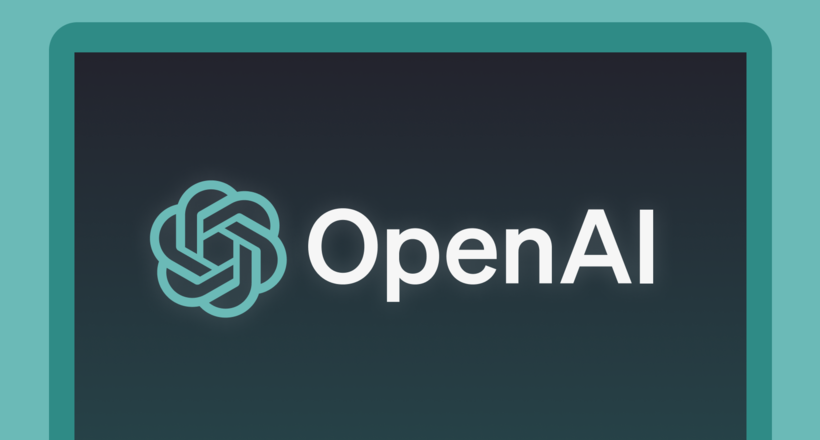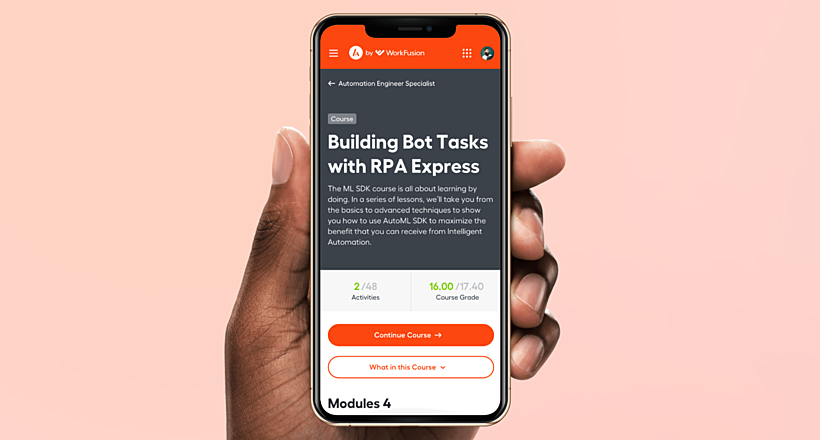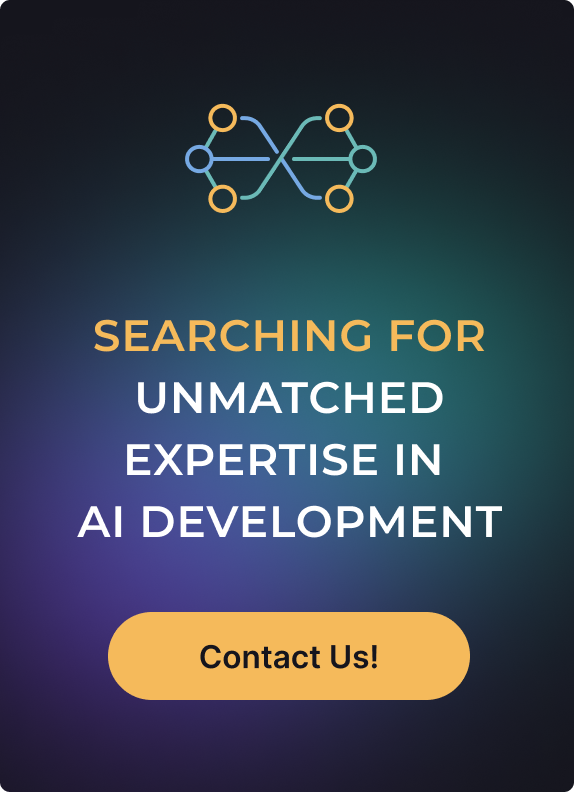
Generative AI models are a powerful new technology that can automatically generate text, images, audio, music, and even video content - no wonder they are taking the world by storm!
Businesses were the first to recognize the value of emerging technology. With the ever-rising demand for a constant flow of content for marketing, sales, and other workflows, companies are looking into ways to implement generative AI models into their production.
However, training generative AI models can be a challenging task, requiring large amounts of data and specialized computing resources. Apart from technical requirements, it takes a lot of expertise to train the generative models, since they are very hard to interpret, and they can learn biases from the data they were trained on.
You get it: it’s no easy task.
But worry not: we are here to guide you through the entire endeavor. Drawing from our extensive experience of working with generative AI models and building all sorts of things with them, we will describe how to train a generative AI model in separate steps and keep it as confusion-free as possible.
6 Steps to Train a Generative AI Model
We broke down the process of training a generative AI model into easy-to-follow 6 steps. As a result, you will get a generative AI model trained for your particular use cases, one that you’ll neatly integrate into your content production.
You won’t have to tinker with the thing anymore - just enjoy the benefits of AI automation.
Step 1: Define the Objective
We feel like that step needs to be spelled out more than any other from the list. Though it may seem obvious and not hard at all, having a clear understanding of what you’re trying to achieve will greatly impact the way you train your AI model.
Whether you’re trying to take your email marketing off the ground or streamline video generation for your video team, tailoring a Generative AI model to a specific purpose ensures a stable outcome.

So don’t skip this step — try to define the type of output you need, what type of data you will use to train the AI model, and what particular problems you intend to solve with it.
Step 2: Collect and Prepare Data
That one is the second most important step to train an AI model. The data you use for training heavily impacts the quality of content your Generative AI model will put out, so approach it as diligently as possible.
On top of that, the amount of data also matters. The more AI can study, the better results it will produce.
Take your time and collect a high-quality dataset, which must include the reference content you would like the AI model to generate. For instance, if you need it to generate images, collect as many images of desired style as you can. Make sure they are of good quality to avoid misinterpretations on the AI model’s side.
Then off to prepare the data so that the generative AI model can study it. Go over your dataset and remove the images of low quality, get rid of the noise, and convert the content to the format supported by your Generative AI model.
Step 3: Choose the Right Model Architecture
Another vital preparation step is choosing an actual generative AI model architecture.
Architecture defines the structure of the model, meaning it impacts the way the AI model analyzes the training data, and how it uses the data to create new content.
There is a wide variety of offerings on the market, each with its own strengths and weaknesses, so evaluating those is important to choosing the one that fits your needs.

Let’s go over some of the most widespread model architectures and talk about their advantages and disadvantages:
- Generative Adversarial Networks (GANs): the generative AI models of this type usually consist of two competing networks: a generator and a discriminator. The generator is responsible for creating new content, while the discriminator's job is to distinguish between content made by humans and generated by AI. They work very well at generating realistic images thanks to their ability to capture intricate details. GANs are used in Faceapp to edit faces on photos; in addition, Nvidia uses StyleGAN2 to produce photorealistic images of people.
- Variational Autoencoders (VAEs): VAEs are a type of generative AI model that uses a latent space to represent the data. The model learns to encode the data into the latent space and then decode it back into the original data. They are the best at generating voiceover content and text. One of the most popular models for image generation — DALL-E 2 — is actually a VAE model.
- Diffusion models: models of that type consist of a single neural network and work by gradually adding noise to a real data sample until it becomes pure noise. Then they reverse the process, starting with the noise and reducing it until a real data sample is produced. Diffusion models offer better control over the visual content generation process, making them better suited for specific image generation tasks. For instance, GLIDE is a diffusion model that can generate photorealistic images from text descriptions.
Now you have your data selection, and you have the model you think will best fit your content production process. Now, you can go to the actual training process.
Step 4: Train the AI Model
So, to the main part of the process, where the network analyzes your data set and learns patterns from it. Training generative AI models is usually approached in interactions, as you will need to review the training results and fine-tune the chosen parameters to achieve the desired results.
The entire ordeal can be broken down into three major steps, which we’ll look over right now.
Those steps are:
- Initializing the model parameters: you can use a pre-trained model for that, or initialize the parameters randomly. If you’re using a model with a large number of parameters, initializing them randomly is preferable, since doing so manually can put a lot of strain on computing power.
- Choosing the right optimizer and loss function: an optimizer is an algorithm that updates the model's parameters during each training session. Using the data, the model tries to generate content, which is then compared to the desired content with the help of a loss function. The optimizer then jumps in to adjust the parameters, so that the next batch of results will resemble the desired output more closely. Choosing the right optimizers and loss functions is vital since they all are suited for different types of content generation.
- Setting the hyperparameters: those are the parameters that the model does not learn during training, but which are set manually for it. Hyperparameters include:
- the learning rate — determines how quickly the model updates its parameters;
- batch size — controls the number of data samples analyzed by the model at a time;
- number of epochs — which defines the number of times the data set is passed through the model.
Apart from the initial training process, there are a couple of different AI model training techniques available. They have their own pros and cons and are suitable for different tasks. Let’s take a look at those as well:
- Fine-tuning: is about retraining a pre-trained AI model on a new dataset which can improve the model performance on a specific task.
- LoRA training: stands for Low-Rank Adaptation; involves training a low-rank matrix to adapt a pre-trained AI model to a new task. It is a popular approach to fine-tuning large language models.
- One-shot learning: includes using a single example to train an AI model to learn new tasks. Works best for tasks with small pools of data.
- Few-shot learning: a bit like one-shot learning, an AI model is trained from a small number of examples, allowing the model to learn more complex tasks.
- Meta-learning: involves training an AI model to learn how to learn new tasks quickly and efficiently. It makes the model able to adapt to new environments or data distributions.
Sticking to the process during training will result in consistent results from the Generative AI model, but there are a couple of pitfalls you may encounter.

Here are a couple of tips on how to avoid common model training issues:
- Overfitting — happens when the model learns the training data too well and is unable to generalize to new data. To avoid overfitting, you can use techniques such as regularization and data augmentation.
- Mode collapse — it occurs when the model generates the same output repeatedly. To avoid mode collapse, you can use techniques such as diversity loss and gradient penalties.
- Training instability — GANs can be difficult to train and can be unstable. To improve the stability of training, you can use techniques such as spectral normalization and gradient clipping.
Step 5: Evaluate the AI Model
Once you have trained a generative AI model, it is important to evaluate its performance to ensure that it is meeting your expectations. Several different metrics can be used to evaluate the performance of generative AI models, depending on the specific task that the model is being used for.
Common metrics for evaluating generative AI models:
Accuracy — represents the percentage of outputs generated by the model that are correct. This metric is typically used for tasks such as text classification and image classification.
Precision — defines the percentage of outputs generated by the model that are relevant. This metric is typically used for tasks such as information retrieval and question answering.
Recall — describes the percentage of relevant outputs that are generated by the model. This metric is typically used for tasks such as recommendation systems and anomaly detection.
Diversity — measures the variety of outputs that are generated by the model. This metric is typically used for tasks such as image generation and text generation.
Naturalness — evaluates how realistic or human-like the outputs generated by the model are. This metric is typically used for tasks such as text generation and speech synthesis.
It is also important to evaluate the performance of the model on a held-out test set that was not used for training. As we have discussed before, you may encounter an overfitting problem, when the model performs well on the training data but poorly on new data. By evaluating the model on a held-out test set, you can get a more accurate estimate of how well the model will perform in the real world.

If the model is not performing well on the held-out test set, there are some things that you can do to try to improve its performance:
- Adjust the hyperparameters — try adjusting different hyperparameters to see if this improves the performance of the model.
- Use a different optimizer or loss function — using different optimizers and loss functions may improve the performance of the model.
- Increase the amount of training data — if the model is overfitting the training data, you can try increasing the amount of training data. This will help the model to learn a more generalizable representation of the data.
- Use regularization techniques — regularization techniques can help to prevent the model from overfitting the training data. Some common regularization techniques include L1 regularization and L2 regularization.
- Use data augmentation techniques — those can help to increase the size and diversity of the training data. This can help to improve the performance of the model on the held-out test set.
Once you have identified and addressed any performance issues, you should re-evaluate the model on the held-out test set to ensure that the changes have had a positive impact.
Rinse and repeat until the model performs up to your standard.
Step 6: Deploy the Model
So, you have successfully trained your Generative AI model. Now, it is time to use it to generate new content. There are a number of different ways to deploy a generative AI model, depending on your specific needs.
Essentially, you have to build software that will use your model. That software can be:
- Web service: you can build your generative AI model as a web application so that the users can access it through the web browser.
- Mobile app: building a mobile application will require more time and resources, but will provide a better user experience on smartphones and tablets.
- Standalone application: a standalone app will also require an entire development process to take place, but you will be able to use it seamlessly on computers and laptops.
Alternatively, there is a selection of services that allow you to easily train, deploy, and maintain generative AI models:
- AWS SageMaker: a fully featured machine learning service that enables you to manage and deploy generative AI models. It takes over the infrastructure management, can be scaled to cover large production with generative AI, and integrates with other AWS services.
- Azure AI: along with integration with Azure services, it supports multi-cloud and hybrid deployments, enabling you to deploy your generative AI model to an on-premises environment or to a different cloud provider.
- Google Cloud AI services: Google Cloud guarantees the good performance of generative AI models and offers deployment options with managed services, unmanaged services, and hybrid deployments.
- RunPod: features a simple interface to quickly deploy and manage generative AI models, as well as the ability to scale the model.
- Replicate: offers access to high-quality GPUs and TPUs to make sure that your generative AI models perform well and features a variety of frameworks like TensorFlow, PyTorch, and JAX.
During the deployment of the Generative AI model, it is important to make sure that it will be able to perform efficiently, meaning it must generate content with consistent speed and handle a large number of requests.
Here are a couple of things you can do to make sure your model performs up to your standard:
- Using a smaller model: though they may not be able to generate content of the same high quality as larger models, they are not resource-hungry as larger AI models
- Quantizing the model: quantization allows you to reduce the size of the model while retaining the content generation accuracy.
- Using a distributed training framework: Distributed training frameworks can be used to train the model on multiple machines. This can significantly speed up the training process.
- Using a caching mechanism: caching stores the results of frequently used queries. This can improve the performance of the model by reducing the number of times that it needs to generate new content — it can just reuse the queries.
As you use the model for content generation, keep in mind that it may degrade over time. To combat that, you will need to update it, addressing the changes in the data or the user base.
Here’s how you can track the performance of your Generative AI model:
- Tracking the number of requests and the response times: this way, you will catch performance issues and will be able to address them as quickly as possible.
- Monitoring the accuracy and diversity of the generated content: reviewing the results will help identify the quality issues.
- Listening to the user feedback: this can help you to identify any areas where the model can be improved.
Once you have reviewed the model and pinpointed the quality issues, you can gather a new dataset and retrain the model, adjusting its parameters along the way.
Then, deploy the new model to production, rinse, and repeat.
The Cost of Training Generative AI Models
Now, onto the main question: how much will generative AI training cost?
The overall cost depends largely on several variable aspects, which you can adjust per your needs. Those aspects include:
- The size and complexity of the model;
- The size of the dataset used for training;
- The hardware and software resources used for training.
The final cost will be determined by which options you end up going with in terms of model size and dataset size.
For instance, training an Open AI model like GPT-3 can take up to several months and cost millions of dollars, while training a diffusion model or GAN usually lasts for a few weeks and costs tens of thousands.
The cost curve is quite steep here, which is why you must be cautious about choosing the right tools and approaches.
Alternatively, you can get help from professionals experienced in training generative AI models.
How Agente Can Assist You?
Agente's team isn't just familiar with generative AI models – we're experts in wielding their power for real-world applications. Our engineers possess extensive experience in working with these models, allowing them to not only replicate existing structures but also tailor and train them to address your specific needs. This ensures you receive consistently high-quality content generation that aligns perfectly with your project's goals.
Our success stems from a proven track record in building various AI applications, including photo enhancers, chatbots, and text generators. These projects have provided us with invaluable insights into the effective and efficient training of generative AI models. Through this experience, we've honed our ability to train these models to create a diverse range of content, from product descriptions and marketing copy to scripts and even realistic dialogue for chatbots.
Furthermore, our close communication with clients throughout the project lifecycle is paramount. This collaborative approach ensures we flawlessly translate your vision into a final product that directly addresses the pain points you identified. We take the time to understand your goals and challenges, meticulously crafting a generative AI solution that delivers the content you need, exactly when you need it.
Bottom Line
Generative AI models have the potential to revolutionize many industries, and businesses that know how to train generative AI models will be well-positioned to compete in the future.
In order to get the AI model that generates content of high quality, one must have a clear definition of what the content model must produce. A clear goal will help with fine-tuning the model during the training process.
Also, you will need large amounts of data to train your own AI model effectively. The data should be representative of the type of output you want the model to generate.
Choosing the right model also matters a lot. The best model to use will depend on your specific training goals and the type of data you have available.
Generative AI models have a large number of parameters that need to be adjusted during training. It is important to monitor the model's performance during training and to adjust the parameters as needed.
Rate this post!
17 ratings, average ratings is 1.9 out of 5
Frequently asked questions
Whether you represent a private business, a large enterprise or an educational institution, our e-learning platform development services will greatly improve the performance of your company.
What algorithms are used in training AI models?
There are many different algorithms used to train AI models, but some of the most common include linear regression, logistic regression, decision trees, support vector machines, and neural networks. The choice depends on the type of AI model being trained, the data that is available, and the computational power.
How do I choose the right data to train an AI model?
The most important is making sure that your data set is relevant to the task you want the AI model to perform, that the data is high-quality and error-free, and that it is of a sufficient volume. You can collect your own datasets or use the public ones.
How long does the AI model training process usually take?
The training time depends on the volume of the training dataset, the complexity of the model, and the hardware and software resources available. Training a large model like LaMDA or GPT-3 can take several months, whereas a simple diffusion model can be trained in several days or weeks.
What are the challenges in AI model training?
The challenges of AI model training include: overfitting, when the AI model is unable to generate data different from the training dataset; and mode collapse, when the AI model generates the same output repeatedly.
Related Posts

19 January 2024
AI Model Fine-Tuning: How to Use Your Organization's Data?
Organizations are transitioning from generic solutions to hyper-customized intelligence, seeking AI models designed to address their unique challenges and propel them toward strategic objectives.
This demand has propelled fine-tuning to the forefront of AI development.

09 May 2024
Top 7 Open-Source LLMs for 2024
Here, we break down everything you need to know about open source LLM models: top 7 offerings on the market, their pros, cons, and capabilities.

16 January 2024
ChatGPT Plugin Development: Features and Benefits for Business
Explore the process of crafting a ChatGPT plugin tailored precisely to meet your unique business requirements.

07 May 2024
What are large language models: a complete guide
Get your large language model definition straight: in this article, we cover the concept of LLMs, their capabilities, types, and challenges.

Develop Custom Corporate Microlearning Platform
Custom microlearning solutions for corporate training: Discover how to develop a tailored platform for efficient and engaging employee learning

24 January 2024
Employee Training Management Software Development in 2024: Features and Cost
Streamline your employee training with cutting-edge software solutions. Explore the features and costs of employee training management software.
Let's talk
Is there a challenge your organization or company needs help solving? We’d love to discuss it.

Managing Director, Partner
Andrew Terehin

Thank You!
Your message has been successfully sent.
We will contact you very soon.






